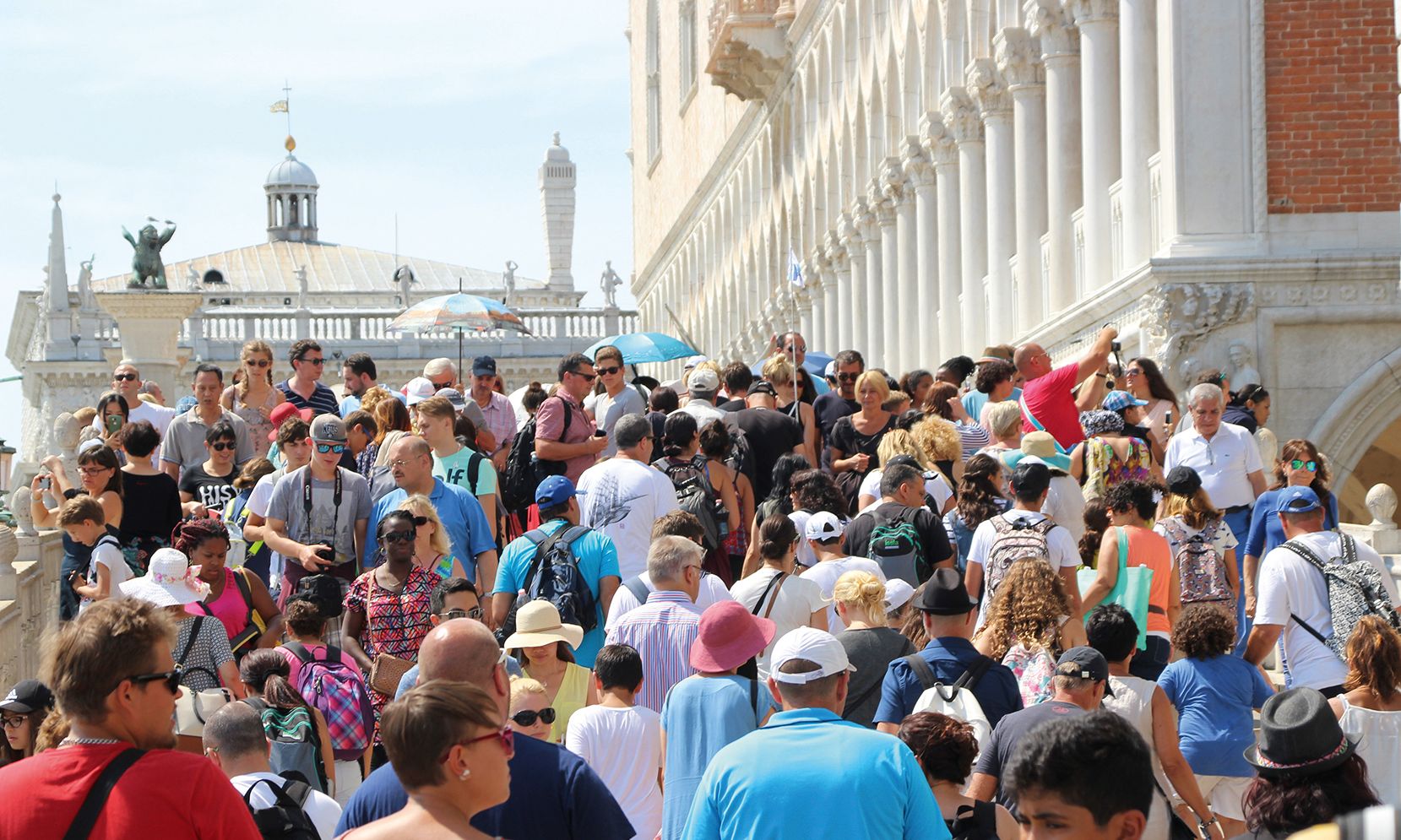Culture vultures: Venice has long had a problem with the vast numbers of tourists who descend on the city. Will an entrance fee help curb the numbers? © Levi van Leeuwen
Venice already gets twice as many daytrippers as the 50,000 presenze (a term that includes those who are sleeping at least one night in the city) calculated in 2018 to be tolerable.
Venice, by its very nature, cannot be changed or expanded, and the number of tourist beds is now greater than the number of residents (49,000 in 2022), so a crisis is approaching. Jan van der Borg, a professor of economics at the city’s Ca’ Foscari University specialising in tourism, has been studying tourist flows in Venice for years and led the team that established the figure of 50,000 as the maximum number of daytrippers that it could cope with, based on the transport system and the number of beds in the city. He says that the €5 entrance fee to be imposed in spring 2024 on certain days, will not reduce numbers.
The Art Newspaper: How should the number of visitors to Venice be apportioned?
Jan van der Borg: The proportion should be 50% tourists who sleep in the city and 50% daytrippers, but at present the latter are 80% of those arriving in Venice (and for all intents and purposes, tourists who sleep on the mainland should also be considered daytrippers). Currently we are getting far more than 100,000 daytrippers on peak days and consistently 15,000 to 20,000 more than capacity.
The town council plans to charge a €5 entrance fee for visitors for the 20 to 30 days when the influx is at its greatest.
The problem is not the peaks, which any city of culture faces on certain days, but the many days—at least 200 a year—when the numbers exceed maximum capacity. This is what wears it down, turning it into a kind of amusement park and driving away the residents. For the entrance fee to deter arrivals in the city, it should be charged every day. As [the plan] has been conceived, it will serve no purpose, not least because of the wide range of exemptions to payment.
Venice has been studying the problem of tourism for years, with huge quantities of data produced by the now defunct Consortium for Research and Training, once financed by the town council and province of Venice.
Indeed, but it never adopted the measures put forward when the situation was less serious than it is today. The paradox is that the tourism studies produced by Venice but never put into practice are now being used by cities that are seriously addressing the problem of excess tourism, such as Salzburg, Berlin, Barcelona and Bruges. When the pandemic emptied Venice, the town council had the opportunity to really reorganise its tourism to be a model for other cities of culture. Instead, everything stayed as before.
From the taxation point of view, what could be done to improve the flow of those who stay in the city and the daytrippers?
We need a new fiscal policy for tourism, because today the town council penalises with a city tax precisely those it should be encouraging—the overnight tourists—while the daytrippers are unaffected. This city tax should be reduced, while expanding the measures that should be applied all year round to daytrippers. Currently we have too many taxes that often hit the visitors we would most like to protect, that is, those who stay several days in the city: the city tax, the ZTL tax on incoming tourist buses, an airport boarding tax that is about to be introduced, and now the entrance ticket.
The other development that has been very damaging is that of B&Bs and rented-out rooms, which have multiplied enormously over the past decade, depriving residents of housing and rental opportunities.
This has been due to the absence of any serious pro-resident housing policy on the part of the town council for many years. Those who rent out more than two apartments to tourists should no longer be considered private individuals supplementing their income, but entrepreneurs in the hospitality sector with all the tax obligations that this entails, plus the same hygiene and safety obligations as any hotel.
But how can the trend be reversed to improve the management of tourist flows in Venice?
By focusing very deliberately on the quality of tourism and no longer on quantity. How do you do this? By first doing serious marketing to change the image of the city so that people no longer think they are coming to a theme park for entertainment. And then by working on supply. We can’t stop tourists from coming to Venice, but, with an efficient reservation system and with economic and other incentives and disincentives, we can persuade them to come to the city during periods of lower influx because they are decidedly less expensive. Improving quality does not mean making it so that only those who stay in five-star hotels come here, but also the student with cultural interests who can use the city differently.
Is that possible?
Yes, look at the case of the Biennale, which in the past ten to 15 years has steadily increased the number of its visitors by quality programming of its exhibitions that also attract many young people. If what is on offer is serious, of quality, and properly promoted, people come in a different frame of mind to Venice. And when you then read that the mayor of Venice, Luigi Brugnaro, announces that he wants to create a vast disco at the Arsenale, you know that that is not the direction in which to go.

